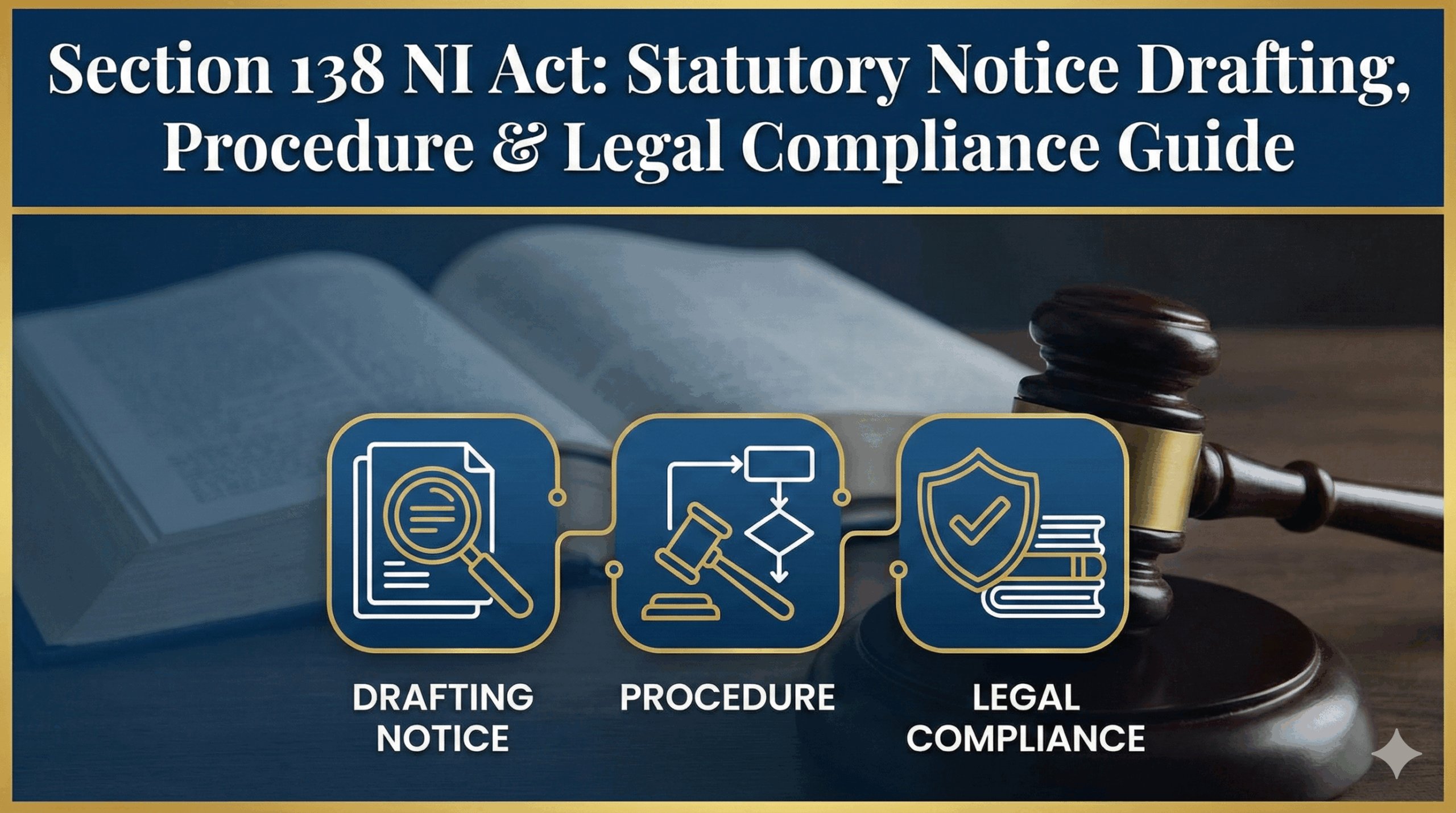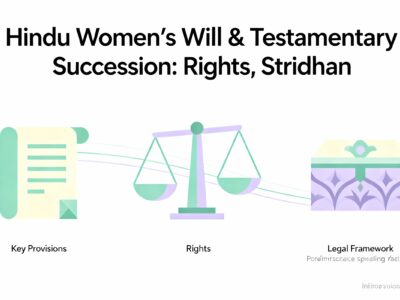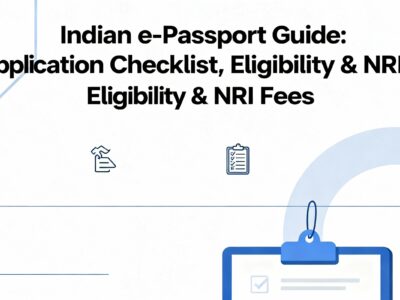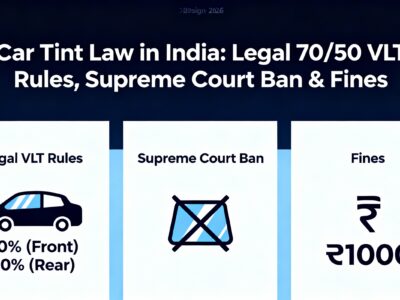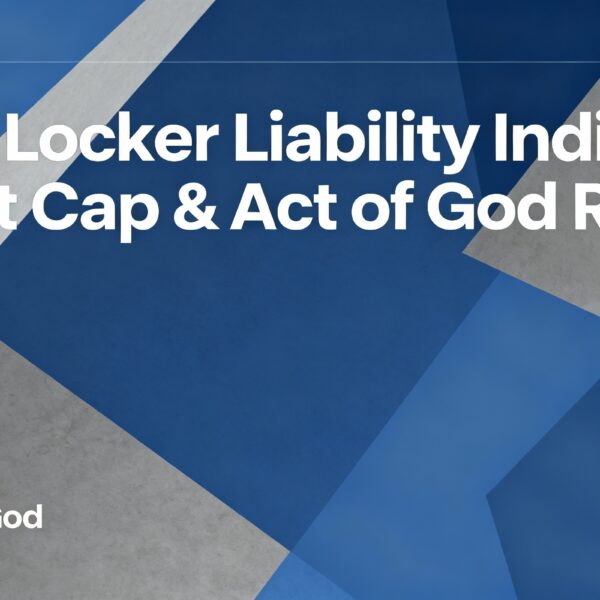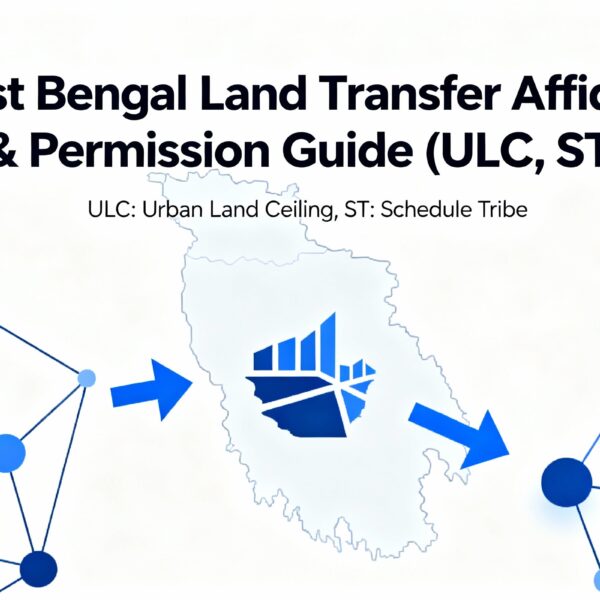SARFAESI Act, 2002: Borrower’s Guide to Property Repossession
Facing a loan default and the threat of property repossession under the SARFAESI Act, 2002 can be an incredibly stressful experience. When a loan account is classified as a Non-Performing Asset (NPA), lenders are empowered to take action without initial court oversight, starting with a Section 13(2) demand notice. This comprehensive guide, updated for September 2025, is designed to demystify the entire process for borrowers.
We will walk you through each stage of the repossession timeline, explain your fundamental borrower’s rights, detail the process for filing an appeal with the Debt Recovery Tribunal (DRT), and explore proactive strategies like One-Time Settlements (OTS). Knowledge is your first line of defense; use this guide to understand the law, protect your assets, and navigate your response effectively.
Navigating Property Repossession: A Borrower's Comprehensive Guide to the SARFAESI Act, 2002
Facing action from a lender can be daunting. Understand the process, know your rights, and learn how to respond effectively with our in-depth guide. Updated for September 2025.
Executive Summary
The SARFAESI Act gives banks powerful tools to recover loans without initial court intervention. However, this power is balanced by a strict, time-bound process that provides borrowers with specific rights and legal remedies. The key to protecting your property is a proactive, timely, and informed response. This guide breaks down every stage, from the initial notice to your options for legal recourse through the Debt Recovery Tribunal (DRT).
Understanding the SARFAESI Act, 2002
The SARFAESI Act was created to help banks and financial institutions recover bad loans (Non-Performing Assets or NPAs) more efficiently. It allows them to take possession of and sell a secured asset (like a house or land pledged as collateral) if a borrower defaults. But the process isn't arbitrary; it's triggered only when specific conditions are met.
When does the Act apply?
- The loan must be a secured loan (backed by collateral).
- The loan account must be classified as an NPA (overdue for >90 days).
- The principal loan amount is over ₹1 lakh.
- The borrower has paid back less than 80% of the total loan.
When does it NOT apply?
- The loan is unsecured (e.g., a personal loan).
- The security provided is agricultural land.
- The outstanding amount is too low (< ₹1 lakh or >80% paid).
Does SARFAESI Apply To You? A Quick Check
Answer these questions to see if your situation falls under the Act's purview.
The Anatomy of Repossession: A Step-by-Step Breakdown
Stage 1: The Section 13(2) Demand Notice
The bank sends a formal demand notice once your account is an NPA. This is the official start. You are given a critical 60-day window to pay the outstanding dues.
Stage 2: Borrower's Objection (Section 13(3A))
You have the right to object to the notice. The bank is legally required to review your objections and respond with reasons for non-acceptance within 15 days. A failure to reply is a major procedural lapse.
Stage 3: Enforcement of Security (Section 13(4))
If you don't pay within 60 days, the bank can take action. This includes taking symbolic or physical possession of your property. This action is the trigger for you to file an appeal with the DRT.
Stage 3A: Role of the District/Chief Metropolitan Magistrate (Section 14)
If the bank faces resistance in taking physical possession, it can apply to the District Magistrate (DM) or Chief Metropolitan Magistrate (CMM). The DM/CMM's role is purely administrative: to verify the bank's claims via an affidavit and provide assistance (including police force) to take possession. They do not decide on the merits of the case.
Stage 4: Possession & Valuation (Rule 8)
The bank issues a possession notice, affixes it to the property, and publishes it in two newspapers. They must then get the property valued by an approved valuer to set a reserve (minimum) price for the auction.
Stage 5: Sale Notice & Auction (Rules 8 & 9)
You must be served a sale notice at least 30 days before the sale. This notice is also published and contains details of the auction. This is your final window to exercise the Right of Redemption.
Interactive SARFAESI Timelines
This chart visualizes the critical deadlines a borrower must track. Hover over the bars for details.
A Borrower's Arsenal: Your Rights & Safeguards
Right to Proper Notice
You must receive timely and correctly formatted notices at every stage (demand, possession, sale).
Right to Fair Valuation
The bank must get a fair market valuation before setting the auction's reserve price. You can challenge this.
Right of Redemption
You can reclaim your property by paying all dues, but this right ends once the sale notice is published.
Right to Surplus Proceeds
If the sale fetches more than your debt, the bank must refund the extra amount to you.
Right to Compensation
If the DRT finds the bank acted unlawfully, it can order them to pay you compensation and restore your property.
Challenging the Creditor: Using the Debt Recovery Tribunal (DRT)
The DRT is the special court for SARFAESI matters. If you believe the bank has violated procedure, you can file a Securitisation Application (SA) here. Civil courts cannot hear these cases. You must file your SA within 45 days of the bank taking action under Section 13(4) (e.g., taking possession).
Common Grounds for a DRT Appeal
- Incorrect NPA classification.
- Errors in the demand notice.
- Bank's failure to reply to your objection.
- Flawed possession or sale procedure.
- Gross undervaluation of the property.
- Asset is exempt (e.g. agricultural land).
Landmark Judgments & Legal Precedents
The Supreme Court of India has played a vital role in shaping the interpretation of the SARFAESI Act, often balancing the powers of lenders with the rights of borrowers. Understanding these key judgments is crucial for any legal strategy.
Mardia Chemicals Ltd. vs. Union of India (2004)
This landmark case upheld the constitutional validity of the SARFAESI Act but read down the requirement of pre-depositing 75% of the debt amount to file an appeal. The court held this was an unreasonable restriction on the right to appeal.
Transcore vs. Union of India (2008)
The Supreme Court clarified that banks could pursue multiple recovery remedies simultaneously. A bank can initiate SARFAESI proceedings even while a case is pending in the DRT under a different Act, enhancing the lender's recovery options.
Mathew Varghese vs. M. Amritha Kumar (2014)
This judgment emphasized the mandatory nature of the 30-day notice period for a property sale under Rule 8(6). The Court ruled that any sale conducted without strict adherence to this notice period is invalid, providing a strong procedural safeguard for borrowers.
Indian Overseas Bank vs. M/s. Ashok Saw Mill (2009)
The Court held that the DRT has the authority to not only set aside an auction but also to restore the status quo ante (the state of affairs before the action). This means the DRT can order the restoration of possession to the borrower if the bank's actions were found to be illegal.
The Guarantor's Dilemma: Rights and Liabilities
It is a common misconception that lenders must first exhaust their remedies against the principal borrower before pursuing the guarantor. Under Indian contract law, the liability of a guarantor is co-extensive with that of the principal debtor. This has significant implications under SARFAESI.
Key Points for Guarantors
- Simultaneous Proceedings: The bank can initiate SARFAESI proceedings against the borrower and the guarantor simultaneously.
- Separate Notices: The lender must serve a separate Section 13(2) notice to the guarantor if they intend to enforce the security provided by the guarantor.
- Right to Object: Guarantors have the same right as the principal borrower to file an objection under Section 13(3A) and an appeal before the DRT.
- Right of Subrogation: If the guarantor pays off the debt, they step into the shoes of the creditor and can recover that money from the principal borrower.
Legal Standpoint
The Supreme Court in State Bank of India vs. V. Ramakrishnan has affirmed that proceedings can be initiated against guarantors' assets. Guarantors must be as vigilant as the principal borrowers in responding to notices.
The IBC Shield: How Insolvency Proceedings Impact SARFAESI
The Insolvency and Bankruptcy Code, 2016 (IBC) provides for a 'calm period' through a moratorium under Section 14 once a company enters the Corporate Insolvency Resolution Process (CIRP). This has a direct and significant impact on ongoing or potential SARFAESI actions.
Effect of the Moratorium
Once a moratorium is declared by the National Company Law Tribunal (NCLT):
Freeze on Actions
No new SARFAESI action can be initiated against the corporate debtor's property.
Stay on Existing Actions
Any ongoing SARFAESI proceeding, including auctions, comes to an immediate halt.
Possession Status
The bank cannot take possession of the corporate debtor's assets during this period.
Important Note: This protection applies only to the assets of the corporate debtor. The moratorium does not extend to the personal assets of promoters or guarantors unless a separate insolvency process is initiated for them.
The Evolving Scope of SARFAESI
The Act's application has expanded over the years through legislative amendments and judicial pronouncements, bringing more entities under its purview.
Inclusion of Cooperative Banks
In the case of Pandurang Ganpati Chaugule & Ors. vs. Vishwasrao Patil Murgud Sahakari Bank Ltd., the Supreme Court held that cooperative banks are considered 'banks' under the Act. This empowered them to utilize SARFAESI provisions for loan recovery, a power previously limited to commercial banks.
Role of Asset Reconstruction Companies (ARCs)
ARCs are specialized financial institutions that buy Non-Performing Assets (NPAs) from banks. When an ARC acquires a debt, it steps into the shoes of the original lender and can initiate or continue SARFAESI proceedings against the borrower. Borrowers must then deal with the ARC instead of the bank.
SARFAESI vs. Other Recovery Laws: A Comparative View
While SARFAESI is a powerful tool for secured creditors, it exists alongside other laws like the Recovery of Debts and Bankruptcy Act (RDB Act) and the Insolvency and Bankruptcy Code (IBC). Here's how they differ:
| Feature | SARFAESI Act, 2002 | RDB Act, 1993 | IBC, 2016 |
|---|---|---|---|
| Primary Goal | Asset Reconstruction & Enforcement of Security Interest | Debt Recovery Adjudication | Insolvency Resolution & Revival |
| Court Intervention | No initial court intervention required | Requires filing an Original Application (OA) with DRT | Requires filing an application with NCLT |
| Applicability | Only for Secured Creditors | For both Secured and Unsecured Creditors | For Financial and Operational Creditors |
| Outcome | Sale of secured asset to recover dues | DRT issues a Recovery Certificate | Resolution Plan or Liquidation of the company |
Frequently Asked Questions (FAQ)
Can a tenant be evicted under SARFAESI?
It's complicated. The Supreme Court has held that a valid lease created before the mortgage cannot be automatically terminated. However, a lease created after the mortgage is created (and without the bank's consent) may not be protected. Tenants have the right to approach the DRT to protect their tenancy rights.
What if I have a grievance against the auction buyer?
Your primary legal challenge is against the secured creditor (the bank), not the auction purchaser. If the DRT sets aside the sale due to procedural flaws by the bank, the sale to the buyer is also nullified. The buyer's remedy would then be to recover their money from the bank.
Can I settle the loan through a One-Time Settlement (OTS) after SARFAESI notice?
Yes, absolutely. You can approach the bank for a compromise or a One-Time Settlement at any stage of the proceedings, even after the notice has been issued. If an OTS is agreed upon and paid, the SARFAESI action will be withdrawn.
Securing Legal Counsel in West Bengal
Navigating this process alone is difficult. Finding competent legal help is critical. Here are resources available in West Bengal, from government bodies to university clinics.
West Bengal State Legal Services Authority (WBSLSA)
Statutory government body for free legal aid.
Focus: Free legal services for weaker sections of society.
Toll-Free: 1800 3456 6040
Socio-Legal Information Centre (SLIC)
NGO with a wide network.
Focus: Pro bono aid for marginalized persons, women's justice.
Website: slic.org.in/state/west-bengal
Legal Aid Services, West Bengal (LASWEB)
NGO focused on low-income individuals.
Focus: Pro bono aid for those with monthly income below Rs. 1,000.
Phone: 033-3510-7463
NUJS Legal Aid Society
Student-led university clinic.
Focus: Legal counseling, advice, and guidance to appropriate forums.
Website: nujs.edu
Dr. B.R. Ambedkar Legal Aid Clinic (XLS)
St. Xavier's University student clinic.
Focus: Legal literacy and client counseling for the underprivileged.
Website: sxuk.edu.in
Proactive Strategies: Negotiation & One-Time Settlement (OTS)
While legal challenges are one route, proactive negotiation can often lead to a more favorable outcome. A One-Time Settlement (OTS) is a common mechanism where the borrower offers to pay a lump sum that is less than the total outstanding amount, and the bank agrees to waive the rest.
1. Act Quickly
Approach the bank as soon as you anticipate default, or immediately after receiving the demand notice. Lenders are more amenable to settlement before they have incurred significant legal and procedural costs.
2. Prepare a Realistic Offer
Analyze your financial situation and make a reasonable OTS offer. Back it up with a clear plan on how you will arrange the funds. An offer without a credible source of funds will not be entertained.
3. Document Everything
Submit your OTS proposal in writing. Keep records of all correspondence and meetings with bank officials. Once an agreement is reached, insist on a formal, written OTS sanction letter.
Drafting Your Response: A Template for Objection
Responding to the Section 13(2) notice is your first and most critical step. Your objection must be sent via registered post with acknowledgement due (RPAD) within the 60-day period. Below is a basic template to guide your draft. It is imperative to consult with a lawyer to tailor this to your specific facts and circumstances.
[Date]
To,
The Authorized Officer,
[Bank Name],
[Bank Branch Address]
Ref: Your Demand Notice dated [Date of Notice] bearing reference no. [Reference Number]
Sub: Reply/Objection to Demand Notice under Section 13(2) of the SARFAESI Act, 2002 regarding Loan Account No. [Loan Account Number]
Dear Sir/Madam,
I/We are in receipt of your aforementioned notice under Section 13(2) of the SARFAESI Act, 2002 ("the Act"). The contents of the notice are denied, and I/we hereby raise the following objections and representations for your consideration, as is my/our right under Section 13(3A) of the Act.
My/Our objections to the said notice are as follows, without prejudice to one another:
- That the classification of my/our account as a Non-Performing Asset (NPA) is erroneous and contrary to the prudential norms and guidelines issued by the Reserve Bank of India because [Provide specific reason, e.g., regular payments were made but not credited on time by the bank, or a restructuring proposal was pending].
- That the amount of [Amount Claimed] demanded in the notice is incorrect, arbitrary, and not based on a proper statement of accounts. You have failed to provide a detailed breakdown of the principal, interest, and penal charges applied.
- That the demand notice is procedurally flawed and vague as it fails to provide complete and accurate details of the secured assets as required by law.
- [Add any other specific grounds, for example: "That the asset sought to be enforced is agricultural land and is thus exempt from the provisions of the SARFAESI Act under Section 31(i)."]
In light of the above, your notice is illegal, untenable, and issued without due application of mind. I/We urge you to consider these objections and withdraw the said notice immediately. Please furnish me/us with a reasoned decision for the non-acceptance of these objections within the statutory period of 15 days, as mandated by Section 13(3A) of the Act.
Failure to comply with the statutory requirements will compel me/us to seek appropriate legal remedies at your cost and consequence.
Thank you.
Sincerely,
[Your Name(s)]
[Your Address]
[Contact Number]
Disclaimer: This is a sample template for informational purposes only and does not constitute legal advice. The facts and circumstances of each case are different. You must consult a qualified legal professional before sending any response to the bank.
Downloadable Resources Toolkit
To assist you further, we have prepared some essential document templates. These are for informational purposes and should be adapted by a qualified legal professional to fit your specific case.
Strategic Recommendations & Action Checklist
The SARFAESI Act is a procedural law. This means your best defense is often identifying the lender's procedural mistakes. Use this checklist to monitor their actions.


